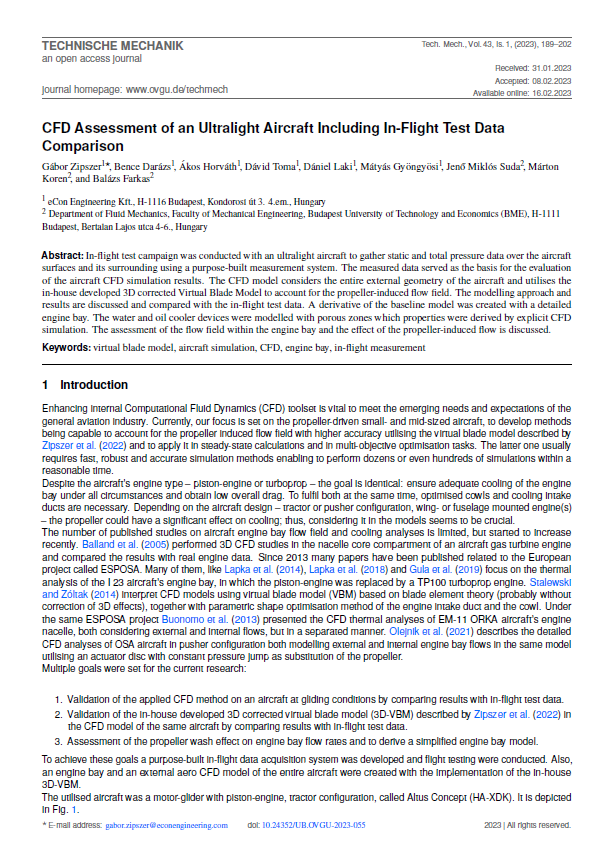CFD Assessment of an Ultralight Aircraft Including In-Flight Test Data Comparison
DOI:
https://doi.org/10.24352/UB.OVGU-2023-055Keywords:
virtual blade model, aircraft simulation, CFD, engine bay, in-flight measurementAbstract
In-flight test campaign was conducted with an ultralight aircraft to gather static and total pressure data over the aircraft
surfaces and its surrounding using a purpose-built measurement system. The measured data served as the basis for the evaluation of the aircraft CFD simulation results. The CFD model considers the entire external geometry of the aircraft and utilises the in-house developed 3D corrected Virtual Blade Model to account for the propeller-induced flow field. The modelling approach and results are discussed and compared with the in-flight test data. A derivative of the baseline model was created with a detailed engine bay. The water and oil cooler devices were modelled with porous zones which properties were derived by explicit CFD simulation. The assessment of the flow field within the engine bay and the effect of the propeller-induced flow is discussed.

Downloads
Published
How to Cite
Issue
Section
License
Copyright (c) 2023 Gábor zipszer, Bence Darázs, Ákos Horváth, Dávid Toma, Dániel Laki, Mátyás Gyöngyösi, Jenö Miklós Suda, Márton Koren, Balázs Farkas

This work is licensed under a Creative Commons Attribution-ShareAlike 4.0 International License.




